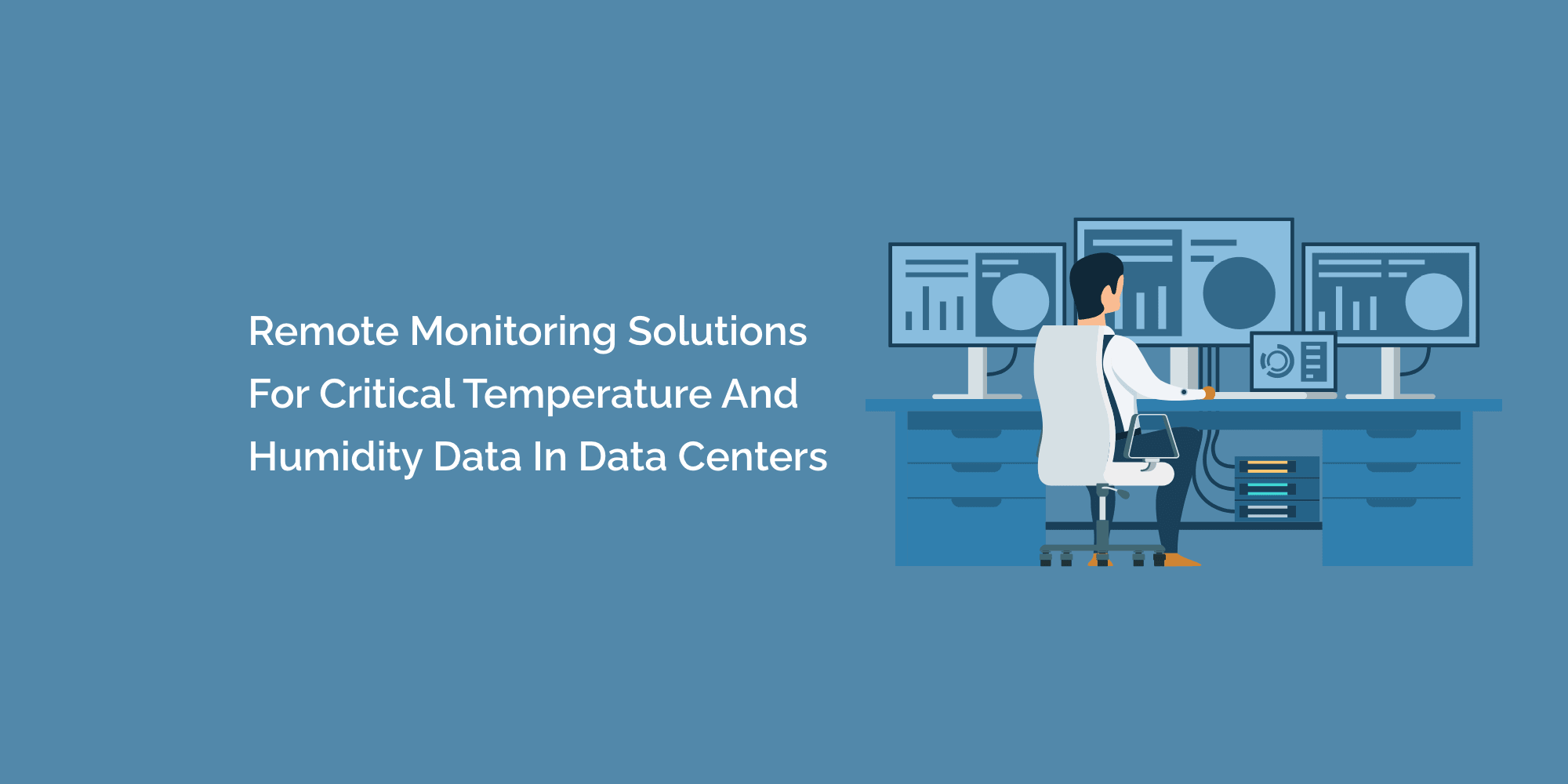In the ever-evolving world of data centers, maintaining optimal environmental conditions is crucial to ensure the integrity and reliability of critical systems and stored data. Remote monitoring solutions for temperature and humidity play a vital role in safeguarding the performance and longevity of data centers. This blog explores the significance of remote monitoring in data centers, the challenges it addresses, and the benefits it brings to ensuring the integrity of temperature and humidity data.
The Importance of Temperature and Humidity Monitoring in Data Centers
We begin by discussing the fundamental role of temperature and humidity in data center operations. Stable environmental conditions are essential for preventing equipment failures, optimizing performance, and reducing the risks of data corruption or loss. We delve into the specific temperature and humidity ranges recommended for data centers and their impact on energy efficiency and equipment reliability.
The Advantages of Remote Monitoring Solutions
We explore the benefits of implementing remote monitoring solutions for critical temperature and humidity data in data centers, including:
- Real-time Visibility: Remote monitoring provides continuous real-time visibility into environmental conditions, enabling operators to detect anomalies promptly and take proactive measures.
- Early Warning Alerts: Operators receive instant alerts when temperature or humidity levels exceed predefined thresholds, allowing them to address issues before they escalate and impact data integrity.
- Predictive Analytics: Remote monitoring solutions offer advanced analytics capabilities, enabling operators to analyze historical data, identify trends, and make informed decisions to optimize data center performance.
- Compliance and Reporting: Remote monitoring systems generate comprehensive reports, facilitating compliance with industry regulations and providing evidence of adherence to temperature and humidity guidelines.
- Energy Efficiency: By monitoring temperature and humidity remotely, data center operators can optimize cooling systems, reduce energy consumption, and achieve energy efficiency goals.
Implementing Remote Monitoring Solutions
This section covers the critical considerations for implementing remote monitoring solutions in data centers, including:
- Sensor Placement: Strategic placement of sensors throughout the data center is essential to capture accurate temperature and humidity readings. We discuss the importance of sensor placement in essential areas and near equipment sensitive to environmental fluctuations.
- Sensor Selection: Choosing reliable and accurate sensors is vital for precise and consistent data collection. We explore the different types of sensors available and their suitability for various data center environments.
- Connectivity and Data Transmission: Seamless connectivity and reliable data transmission are essential for effective remote monitoring. We discuss connectivity options, such as wired and wireless connections, highlighting the importance of secure data transmission protocols.
- Integration with Existing Infrastructure: Remote monitoring solutions should seamlessly integrate with existing data centers management tools, such as facility management systems or data center infrastructure management (DCIM) software, to provide a holistic view of operations.
Ensuring Data Security and Privacy
We address the importance of data security and privacy in remote monitoring solutions. Topics covered include:
- Secure data transmission protocols.
- Encryption methods.
- User access controls.
- Compliance with data protection regulations.
Case Studies and Success Stories
We present real-world case studies and success stories highlighting the successful implementation of remote monitoring solutions in data centers. These examples showcase the challenges faced, the solutions implemented, and the resulting improvements in data center performance, energy efficiency, and data integrity.
Future Trends in Remote Monitoring Solutions
This section explores emerging trends and technologies in remote monitoring, including advancements in sensor accuracy, cloud-based monitoring platforms, artificial intelligence, machine learning integration, and the potential for automated response systems.
Certainly! Here are some frequently asked questions (FAQs) about remote monitoring solutions for critical temperature and humidity data in data centers:
What is remote monitoring for temperature and humidity in data centers?
Remote monitoring for temperature and humidity in data centers refers to using sensors and monitoring systems to collect real-time data on environmental conditions. This data is accessed and analyzed remotely, allowing operators to monitor and manage temperature and humidity levels from a centralized location.
Why is remote monitoring necessary for data centers?
Remote monitoring is essential for data centers, giving operators continuous visibility into temperature and humidity levels. It helps detect and address potential issues that could affect the performance and reliability of equipment, prevents data loss or corruption, and optimize energy efficiency.
What key parameters need to be monitored in a data center?
The key parameters that must be monitored in a data center include temperature, humidity, and air quality. These parameters directly impact the performance and lifespan of critical IT infrastructure components, such as servers, switches, and storage devices.
Conclusion
Remote monitoring solutions for critical temperature and humidity data offer data centers the ability to proactively manage environmental conditions, optimize performance, and ensure the integrity of stored data. By leveraging the benefits of remote monitoring, data centers can mitigate risks, improve energy efficiency, and enhance overall operational efficiency. Data center operators must select reliable solutions and implement best practices to reap the full advantages of remote monitoring and maintain a resilient and reliable data center environment.








